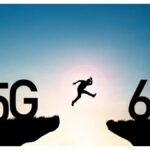Will AI bring aliens to Earth? A research team, spearheaded by Peter Ma, a graduate student at the University of Toronto, utilized deep learning techniques to analyze a dataset containing near-Earth stars. This endeavor uncovered eight previously undiscovered signals with potential significance. The team consisted of experts from prestigious institutions such as the SETI Institute, Breakthrough Listen, and various global scientific research organizations. Their findings have been formally documented and published in the esteemed scholarly journal ‘Nature Astronomy’.
Research employing Artificial Intelligence (AI) suggests that when considering the possibility of detecting technologically advanced extraterrestrial life, a common question arises: “Why haven’t we encountered them?” Often, the explanation provided is our restricted exploration of the galaxy to date. Furthermore, algorithms developed decades ago for basic digital computers may be outdated and inefficient when handling modern petabyte-scale datasets.
“In total, we analyzed 150 terabytes of data related to 820 nearby stars, a dataset discovered in 2017 through conventional means, which nevertheless revealed intriguing signals,” noted Peter Ma, the lead investigator of the study. He added, “However, our initial methodology proved inadequate.” Ma expanded on this, explaining, “We are now expanding our exploration efforts to include the MeerKAT telescope and beyond, focusing on one million stars. We expect that endeavors of this magnitude will make substantial contributions to the overarching inquiry into the existential question, ‘Are we alone in the universe?'”
The study underscored that radio signal detection remains the primary approach due to its capability to transmit information over extensive interstellar distances. It emphasized that radio waves travel through space at exceptional speeds, exceeding even the velocity of our most advanced rockets by up to 20,000 times. “The widespread adoption of these techniques will transform the landscape of radio science,” commented Ma, a research associate and astronomer associated with the SETI Institute and the French National Center for Scientific Research.















